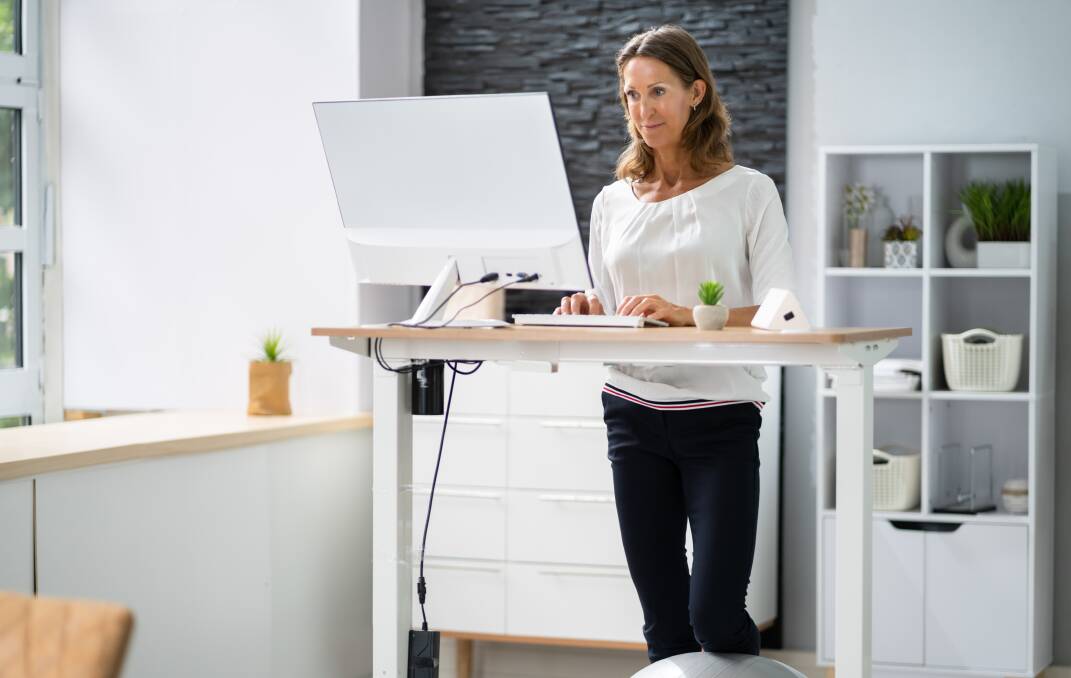How high should a standing desk be?

This is branded content.
The ergonomic benefits that standing desks bring have propelled their popularity since the early 2000s. Finding the ideal standing desk height is something you should do after installation.
Daniel Parkinson from Beststandingdesks.com.au has reviewed some of the best standing desks in the market. In this article, he outlines how high your new standing desk should be to obtain all the best benefits.
What is the ideal standing desk height?
Everyone is an individual so the ideal height of your standing desk will be different to someone else. For the best ergonomic benefits, the desktop of your standing desk should be elevated such that your elbows are bent at a 90 to 100-degree angle when standing. The height between the desktop and the floor is the ideal desk height for you.
A desktop that is too high will elevate your wrists at a slight angle. If it's too low then your hands will be hanging at an angle. So it's really important to have your elbow bent at 90 to 100 degrees and your wrists naturally resting on your desk when working.
Finding the perfect standing desk height for you
Luckily, finding the optimal height of your sit-stand desk only takes three steps.
Step 1 - Stand near your desk and elevate
Start by standing near your height-adjustable desk and use the controls to elevate it until you can rest your wrists on the desktop. Of course, you should be standing in a natural and relaxed position without any slouching which will mean you can stand at your standing desk for a longer period of time.
Step 2 - Obtain the right height
Incrementally adjust your standing desk so that your elbows turn at a right angle. When your elbows are at a 90 to 100-degree angle, your wrists should rest in front of your keyboard. When your forearms are horizontal with your desktop then you have achieved the optimal elevation.
Keep in mind that the keyboard and mouse should be close enough so that you don't end up leaning over and arching your back to reach it.
Step 3 - Save the height
Nowadays, most electric standing desks come with digital controllers that allow you to conveniently save up to four different heights as presets. Programming a desk digital controller has never been easier and with the click of a button, you can quickly change between a seated and standing position.
The proper desk height whilst sitting down
When it comes to sitting, the principles are essentially the same as compared to standing. Whilst seated in your ergonomic chair, your elbows should be at 90 to 100 degrees to the desktop without your shoulder blades pulled upwards.
The desktop of your sit-stand desk should not be lower than the chair's armrests as your wrists and fingers will be too far from the keyboard keys. Your feet should be flat on the floor directly beneath you and good lumbar support will ensure you can sit for longer periods.
What about your computer monitor?
Setting the ideal standing desk height is one thing but the position of your computer monitor is another. Ideally, your eyes should naturally rest at the top third of your computer screen whilst letting your gaze reach downwards towards its centre. Recent research indicates that your head should be between 40cm and 75cm from your screen to avoid eye strain.
Arms that suspend one or two computer screens or a simple monitor stand may prove to be worthwhile investments.
Standing desk accessories that help you find the proper height
There are various accessories on the market that you can use at your height-adjustable standing desk to help you achieve optimal ergonomics.
The standing desk accessory I highly recommend is monitor arms. These popular additions have multiple pivoting joints that allow you to easily raise or lower your computer screens with ease. You can even switch the orientation of your monitors or suspension angle at will. If you don't have the money for arms then the humble monitor stand will do just fine.
Most standing desks have minimum limits on their vertical range. So a good ergonomic chair can come in handy when you're trying to find the correct standing desk height for you. Just be sure that the chair's armrests don't impede the desktop.
Keyboard trays are not commonly found on adjustable standing desks nowadays, but installing one can be useful since they lower the elevation of your keyboard. Adding a keyboard tray to these desks can help put your arms in a correct position that doesn't force your wrists to sit in an uncomfortable position.
The importance of a proper standing desk height
Once you find the ideal standing desk height for both sitting and standing positions then work becomes more enjoyable. Whilst the jury is still out on the long-term benefits of using a standing desk, a lot of research has been conducted on the short-term gains that can be had.
Setting your stand-up desk at the correct height is the first step to ensuring proper posture. If you regularly use a standing desk in this manner then you might find yourself feeling more energetic and productive during the day.
In the office environment, height-adjustable desks are known to promote and encourage collaboration and communication between people. Changing between sitting and standing can help to prevent stagnation during the working day. Because of this, some people may experience heightened productivity and even creativity.
From my own experience, you become more self-aware of your body from a physiological and discomfort point of view, and this is nothing but a good thing.
Disclaimer: This story may include affiliate links with BestStandingDesks partners who may be provided with compensation if you click through. ACM advises readers consider their own circumstances and needs. You should verify the nature of any product or service, and consult with the relevant regulators' website before making any decision.


